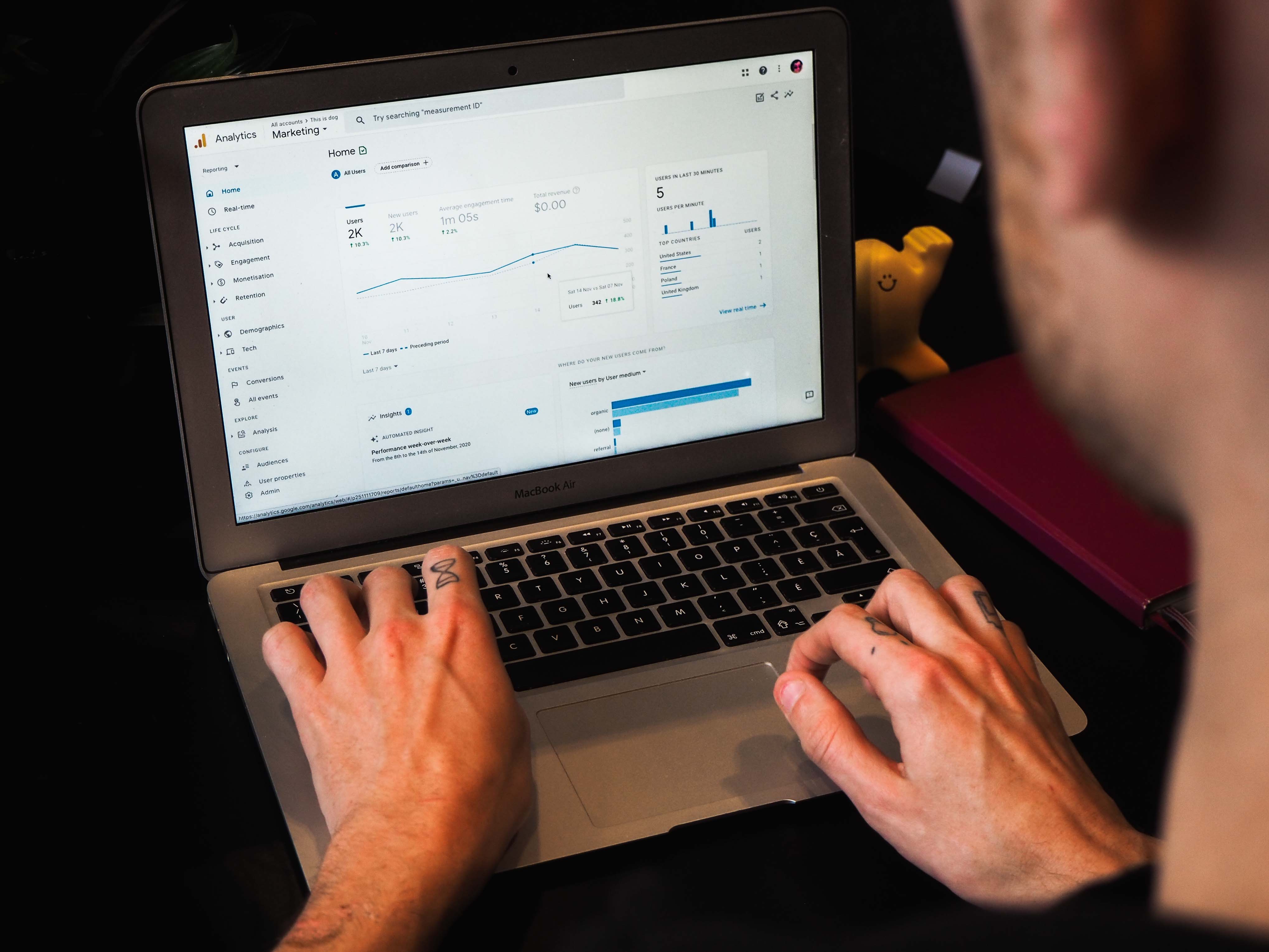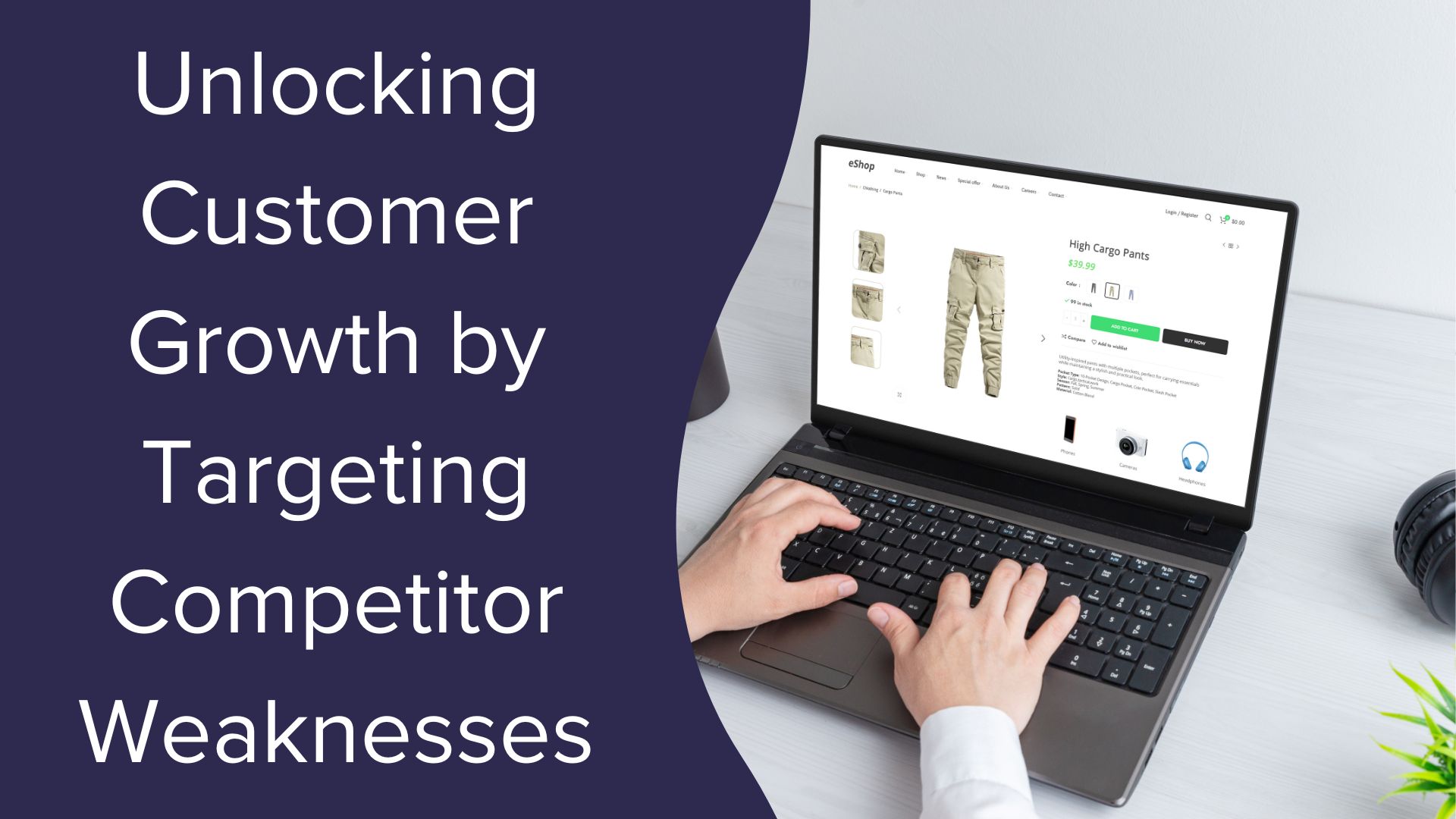Retention Marketing: The Hidden Catalyst for DTC Brand Success
Retention Marketing:
The Hidden Catalyst for DTC Brand Success
The world of DTC ecommerce is competitive. Competitors are increasingly saturating the market, vying not just for new customers but also to steal away your current ones. Staying competitive means employing thoughtful marketing strategies. In 2024, your marketing campaigns need to do more than just reach new customers; you need to focus on employing strategic retention marketing strategies, too. It’s true that customer acquisition is essential. But, acquiring a new customer can be five times more expensive than retaining an existing one.
Here’s why retention marketing is a critical, yet often underutilized, strategy for DTC brands aiming for long-term success and how to integrate customer retention marketing into your holistic digital marketing strategies.
The Overemphasis on Customer Acquisition
DTC brands have historically leaned heavily towards acquisition over retention. Why? One of the main reasons is that brands often assume that there is more scalability in converting net new audiences. They expect that once new customers are brought in, repeat business will naturally follow. Those brands, under pressure to quickly scale, end up focusing on the front end of their customer lifecycles instead of building long-term customer relationships. They tend to focus on metrics like Customer Acquisition Cost (CAC), which can be directly linked to their marketing campaigns, instead of focusing on the Lifetime Value (LTV) of their customers, which may be harder to calculate.

By proactively analyzing customer data, drilling down into LTV by cohort, brands can unveil hidden catalysts to increase sales profitably. This increase in profit can improve cash flow and increase acquisition and fund acquisition as well.
True retention strategies require a different lens and set of processes. They require a data-backed understanding of your customer needs, personalized communications, and continuous engagement. It can seem daunting and prohibitively expensive.
Not only that, this type of granular, incremental-growth data doesn’t usually get internal leadership as excited as, say, increasing net new customers at scale. Nevertheless, in 2024, brands are beginning to recognize the long-term value of investing in retention marketing. It may be one of the most important things you can do to create sustainable growth in your business.
The Rising Importance of Customer Retention
Retention marketing is becoming a more important part of a brand’s marketing strategy in a world where maximizing ROI is mission-critical, and LTV must be a part of the conversation from day one. The costs of acquiring new customers are increasing, especially during Q4 around Black Friday and Cyber Monday (BFCM), making retention even more important. Retaining customers leads to higher lifetime value (LTV), repeat purchases, and word-of-mouth referrals.

For example, you may find that customers acquired during October are actually more profitable in the long run than customers acquired during your peak BFCM sales. Those October customers may not have spent as much at first, but they may come back again for your BFCM deals and may even come back for your January sales, making them more profitable for you in the long term. Therefore investing in acquiring customers in October and tracking their LTV may be a strategic chess move to add to the war chest alongside the increase in acquisition activity in November and December.
Upgrades and advances in technology have made it easier to track and consolidate disparate data and turn sales insights into actionable customer retention marketing plans. It’s never been easier or more prudent for brands to tap into retention marketing.
How To Do Retention Marketing The Right Way
Effective retention strategies demand a deep understanding of customer behavior and preferences. If you’re an established brand looking to expand your retention marketing, look at your existing customer data. If you’re new in the field, you’ll need to benchmark yourself around industry standards.
Leverage the Right Tools
Retention marketing requires deeper customer insights than acquisition marketing. To do it effectively, you’ll need tools that can offer data about customer behavior you currently may be overlooking.
- Klaviyo: An email marketing platform specializing in e-commerce. With it, you can create email lists (e.g., repeat customers, lapsed customers, high-value customers) and send content tailored to your particular segments. Automated emails can be triggered for post-purchase follow-ups, cart abandonment, and loyalty program promotions. You can also view analytics on the effectiveness of emails through their customer data platform (CDP) Funnel Analysis Report, helping you understand what’s working and what’s not.
- Google Analytics: The industry standard for tracking website traffic. You can see how visitors interact with your website, what they’re engaging with, and where they stop engaging. This information allows you to strategically tweak your campaigns to better target a particular segment.
- Shopify: The leading e-commerce platform has a wealth of useful retention data, including purchase history, preferences, and customer contact info. Leverage this data to create a more personalized shopping experience or recommend products, driving repeat sales.
- Triple Whale: A real-time data analysis tool that aggregates data from across all your platforms in a comprehensive dashboard. You can track customer purchase frequency, average order value, and lifetime value. Its real benefit is that it pulls all of this data from different sources like Klaviyo, Google Analytics, and Shopify, giving you a holistic picture of your brand’s health.
These tools all make data collection easier, and a data-driven approach to retention marketing is the only way to get repeat business efficiently and effectively.
Understand Your Current Data
First, look at your return customer rate, which indicates the percentage of customers who make more than one purchase. A low return customer rate could indicate dissatisfaction with your product or an opportunity to employ remarketing strategies.

Other metrics, like your Average Order Value (AOV), can help you segment your customers based on spending patterns. You may want to target customers with a high AOV with loyalty programs or premium offers since they are your big money-makers.
For example, a product that requires only one purchase every few years, won’t benefit much from optimizing towards repeat purchases. Whereas a consumable product that has a 30-day supply, holds massive opportunity to increase purchase frequency over a 3 to 6-month period leading to a dramatic increase in LTV.
Analyzing what products customers are purchasing together via Cart Analysis, analyzing the journey customers take to make their first and next purchase, and digging into the 60-day and 90-day LTV by customer segment all play into the big picture of your customer retention strategy.
This type of cohort analysis is made much easier with tools like Triple Whale or by partnering with industry experts who know how to use such tools effectively.
The goal is to come to an understanding of the baseline leading and lagging indicators of customer retention and the health of your customer relationships.
Segment Your Customer Base
Once you understand your customer data, you can move forward, leveraging that data to group your customers based on their purchase behavior and create distinct customer segments based on those groups. From there, you can target each of those groups with bespoke marketing campaigns and strike the right balance between acquisition and retention.
- Identify how many of your customers are new vs. repeat. Offer discounts to attract new customers and create loyalty programs to retain existing ones.
- Focus on creating and nurturing high LTV customers. These are the customers who will allow you to maintain sustainable growth over time as long as you keep them.
- Focus on product-based and engagement-based segmentation on parameters like customers who abandoned their carts.
The data you analyzed earlier will help inform the particular customer segments that are right for your brand. By segmenting customers based on LTV, you can identify which customers are most valuable over time and tailor your retention efforts to keep these high-value customers engaged.
It may be helpful to create a scoring system to create a segment of ‘ideal’ customers who not only make initial purchases but also have a higher likelihood of repeat purchases and referrals. Examples of these may include, Whales, Newbies, Lost, and Loyal. All with differing behavior and value to the business.
Evaluate Your Customer Experience
It can be tempting to focus only on marketing strategies while attempting to boost your customer retention, but that’s a wasted opportunity. Evaluating your customers’ experience shopping and how they use your products is more important than how customers find out about your brand.

Closely review your purchase process, customer service, product quality, and post-purchase engagement to get this data. This is a great opportunity to implement post-purchase surveys if you are not already. It’s all about ensuring the products and the customer experience you’re selling are worth returning to.
Develop Targeted Retention Strategies
The next step is to dive deeper by leveraging data-based insights about your customer segments to develop bespoke creative and retention strategies that target the specific needs and preferences of each of those customer groups.
Creative That Converts
The backbone of your marketing campaigns is always the quality of the content you’re putting in front of your audience. Tailoring your creative for existing customers to get them to purchase again is key to successful retention marketing.
This means focusing on your segments or personas’ particular interests, needs, and behaviors and designing ads that specifically target those segments.
Ask yourself, if I already bought the product once, would this ad make me want to buy it again or would this ad make me want to buy a complimentary product to complete my experience?
Reaching Your Audience
The tactics you’ll employ will vary wildly based on your particular industry, but below are some popular and effective customer retention techniques:
- Personalized Email Marketing: Leverage tools like Klaviyo for email marketing to re-engage past customers. You can automatically send personalized emails that target different customer segments.
- Loyalty Programs: Loyalty programs incentivize repeat purchases and foster a sense of belonging among customers.
- Subscription options: Subscription options for consumable products simplify the purchasing process for your customer and create predictable revenue streams.
- Rewards programs: Points, discounts, or exclusive benefits for frequent purchases or other actions like referrals or social media shares encourage repeat business and improve the customer experience.
- Exclusive Offers: Special offers or early access to sales for returning customers or those in a specific segment encourage repeat business and enhance the overall customer experience.
Targeted marketing retention strategies that effectively cater to the diverse needs and preferences of your customer base require creating personalized experiences that target these differences. By leveraging data and customer insights, you can develop a range of strategies, from personalized communication to loyalty programs, that keep different segments of your audience engaged with your brand.
Implement, Test, Iterate, Optimize
Now, it’s time to start implementing your retention strategies. Retention marketing, like all creative marketing strategies, is a complicated process that involves creating data-driven tests, backed by hypotheses, implemented in a controlled environment, with the goal of assessing a change that either proves or disproves the hypothesis. This is an iterative process of testing, collecting, optimizing, and reiterating to ensure you’re honing in on your target segments.
The key is not just to set goals but to monitor their success and strategically modify your campaigns based on data-driven results.
For example, if data indicates that customers who purchase one particular product are more likely to become repeat customers, you might decide to concentrate your next iteration of ads on that customer segment. Then measure the increase or decrease in repeat purchases of that cohort over a set period of time. If you can successfully impact their behavior, you can expand this strategy to multiple audiences and products.
Then measure the increase or decrease in repeat purchases of that cohort over a set period of time. If you can successfully impact their behavior, you can expand this strategy to multiple audiences and products.
Ecommerce Success Through Retention Marketing
The most successful ecommerce leaders in 2024 are creating increasingly personalized and customer-centric marketing strategies. Brands that anticipate their customer’s needs and provide tailored experiences are beating out their competitors.
While acquisition provides a scalable influx of new customers, retention builds a stable foundation for sustainable growth with lower investment costs. Many DTC brands struggle with implementing retention marketing strategies, but you need to understand the value of retention marketing and make strategic plans to implement these strategies. Your failed retention is someone else’s acquisition. By effectively using retention marketing, you can unlock massive opportunities for stable growth, starving out your competitors by keeping your current clients while you continue to attract new ones.
About the Author: Jeremy Fenderson is the Sr. Director, Client Partnerships at adQuadrant. He has over 10 years of experience marketing technology, products and services globally. Obsessed with all things digital, he has a passion for connecting people with products and services that improve their lives. He received his BA in Business from Valdosta State University in Georgia. Originally from Lakewood, CA, Jeremy has lived around the world in Georgia, Las Vegas, and even England.




